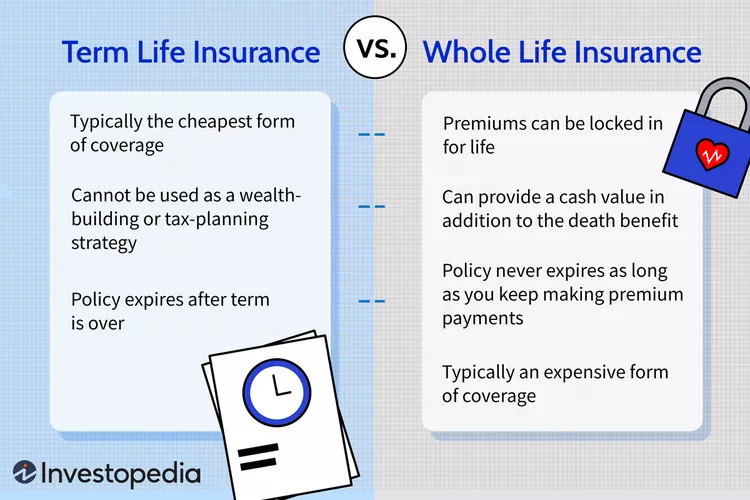How to Lower Your Health Insurance Premiums Without Sacrificing Coverage
Health insurance is a necessity for most American families, but the rising costs of premiums have put financial pressure on many households. The challenge lies in finding ways to lower these costs without sacrificing essential coverage. This article will guide you through proven strategies to reduce your health insurance premiums while maintaining comprehensive protection for your health and well-being. Whether you’re self-employed, insured through your employer, or shopping on the Affordable Care Act (ACA) marketplace, these tips will help you save money without compromising your care.
Factors Affecting Health Insurance Premiums
Health insurance premiums vary depending on several factors. Understanding these elements can help you make informed decisions and identify areas where you can save.
- Age
- Generally, older individuals face higher health insurance premiums due to increased health risks and potential medical expenses. The age factor is more pronounced for people aged 50 and above.
- Location
- The cost of healthcare services differs across states, cities, and regions in the U.S. Insurers take into account the local cost of living and medical services when determining premiums.
- Tobacco Use
- Smokers and tobacco users typically face higher premiums, sometimes as much as 50% more than non-tobacco users. Insurers consider tobacco use a significant health risk factor, leading to increased costs.
- Plan Category
- Health plans come in different categories: Catastrophic, Bronze, Silver, Gold, and Platinum. Each category offers varying levels of coverage and costs, with Catastrophic plans generally having the lowest premiums but highest out-of-pocket costs.
- Family Size
- If you are covering more than just yourself, your premium will be higher. Family plans generally cost more than individual plans due to the added risks associated with multiple people on the policy.
- Income Level
- Under the ACA, your income level can affect your eligibility for subsidies, which can significantly lower your premiums. Those with lower incomes may qualify for premium tax credits.
- Pre-existing Conditions
- While the ACA prohibits insurance companies from charging more based on pre-existing conditions, certain high-risk factors can indirectly affect the cost of health insurance through other mechanisms like plan choices or deductible options.
Choosing the Right Health Insurance Plan
Selecting the appropriate health insurance plan is a key step in lowering premiums. It’s important to understand your options and how each type of plan affects your out-of-pocket expenses.
- Understanding Different Plan Types (HMO, PPO, EPO, POS)
- Health Maintenance Organization (HMO): Requires you to choose a primary care physician (PCP) and get referrals to see specialists. Typically has lower premiums but limited provider networks.
- Preferred Provider Organization (PPO): Offers more flexibility in choosing healthcare providers and doesn’t require referrals. However, PPOs usually come with higher premiums.
- Exclusive Provider Organization (EPO): Similar to HMOs but without the need for referrals. Premiums are generally lower than PPOs, but out-of-network care is not covered.
- Point of Service (POS): A combination of HMO and PPO features. You can get care from out-of-network providers but need a referral from a PCP for specialist care. Premiums fall between HMO and PPO plans.
- Comparison of Catastrophic, Bronze, Silver, Gold, and Platinum Plans
- Catastrophic Plans: Ideal for young, healthy individuals. They have the lowest premiums but highest deductibles, covering essential health benefits after you meet the deductible.
- Bronze Plans: Lower premiums and higher out-of-pocket costs. These plans cover about 60% of healthcare expenses, with the insured responsible for the remaining 40%.
- Silver Plans: A middle-ground option with moderate premiums and out-of-pocket costs. Silver plans cover approximately 70% of healthcare expenses.
- Gold Plans: Higher premiums but lower out-of-pocket costs. These plans cover about 80% of healthcare expenses.
- Platinum Plans: The most expensive in terms of premiums but cover 90% of healthcare costs, making them ideal for those who require frequent medical care.
- Assessing Individual Needs
- Review your healthcare needs, including medications, regular doctor visits, and potential emergencies. Choosing a plan based on your specific requirements will help you avoid paying for unnecessary coverage.
- Pros and Cons of High Deductible Health Plans (HDHP)
- Pros: HDHPs have lower premiums, making them attractive for healthy individuals who rarely use healthcare services. They also pair with Health Savings Accounts (HSA), offering tax advantages.
- Cons: These plans come with high out-of-pocket expenses, which can be risky if you experience a major medical issue.
Strategies to Lower Health Insurance Premiums
There are several practical strategies you can implement to reduce your health insurance premiums while ensuring you have adequate coverage.
- Shop Around for Different Policies
- Don’t automatically renew your health insurance plan each year without comparing your options. Use online marketplaces like Healthcare.gov to explore other policies. You may find a better deal with more coverage or lower premiums by switching insurers.
- Increase Deductibles and Out-of-Pocket Limits
- Increasing your deductible can lower your monthly premium significantly. Just be sure you’re comfortable with the higher out-of-pocket expenses if you need to use your insurance.
- Utilize Health Savings Accounts (HSA)
- Pairing a High Deductible Health Plan (HDHP) with an HSA allows you to contribute pre-tax dollars to cover qualified medical expenses. The funds in your HSA roll over from year to year, and you can use them to pay for deductibles, copayments, and other medical costs.
- Take Advantage of Employer-Sponsored Health Insurance
- Many employers offer group health insurance plans, which are often cheaper than individual policies. Be sure to compare the benefits of your employer’s plan with marketplace options to see which offers the best value.
- Choose Preventive Care Services
- Many health insurance plans cover preventive care services, such as vaccines, screenings, and annual checkups, at no additional cost. Taking advantage of these services can help detect issues early, preventing costly medical bills later.
- Consider Subsidies and Tax Credits
- If your income qualifies, you can receive subsidies to help reduce the cost of your health insurance. These subsidies are available through the ACA marketplace, and applying for them can lower your monthly premium significantly.
- Stay Healthy and Use Wellness Programs
- Maintaining a healthy lifestyle can reduce your premiums. Many employers and insurance providers offer wellness programs that reward you for exercising, quitting smoking, or undergoing routine checkups. Some even offer financial incentives for participation.
- Quit Smoking and Tobacco Usage
- Quitting smoking can save you up to 50% on your premiums. Enroll in a smoking cessation program through your insurance provider or an employer wellness program to reduce your risk and your premium costs.
- Use Generic Medications
- Switching to generic medications can save you a substantial amount on your prescription drug costs. Ensure that your insurance plan covers generics and talk to your doctor about alternatives to brand-name drugs.
Avoiding Common Pitfalls When Lowering Premiums
While lowering your premiums is a smart financial move, there are some common pitfalls to avoid.
- Sacrificing Coverage for Lower Premiums
- Choosing a plan with a lower premium might seem like a good idea, but if the coverage is inadequate, you could end up paying more in the long run. Make sure your plan covers essential benefits like emergency care, hospital stays, and prescriptions.
- Skipping Necessary Medications or Treatments
- Some people try to save money by skipping doses of medication or avoiding necessary treatments. This can lead to worse health outcomes and higher medical costs in the future. Always follow your healthcare provider’s recommendations.
- Relying Solely on Employer Plans
- While employer-sponsored insurance is often cheaper, it’s important to evaluate if the coverage meets all your needs. In some cases, adding supplemental insurance, such as dental or vision, may be necessary.
Maximizing Coverage While Keeping Premiums Low
It is possible to keep your premiums low without sacrificing coverage, but it requires smart decision-making. Here are some practical tips for maintaining comprehensive health insurance while keeping costs down:
- Opt for Network Care Providers
- Choose healthcare providers and hospitals within your insurer’s network. Out-of-network care is typically much more expensive, and many health plans won’t cover it at all unless it’s an emergency. When selecting a plan, be sure to check the network of doctors, hospitals, and specialists to ensure your healthcare needs are met.
- Take Advantage of Telemedicine
- Many insurance companies now offer telemedicine services, which allow you to consult with a doctor via video calls. These services are often less expensive than in-person visits and can help you avoid the costs of urgent care or emergency room visits for non-emergency situations.
- Maximize Preventive Care Benefits
- Under the ACA, many preventive care services such as screenings, vaccines, and wellness checkups are covered without additional costs. Regular preventive care helps catch potential issues early, reducing the likelihood of more costly treatments down the road.
- Look for Plans with Prescription Drug Coverage
- Prescription drug coverage is an essential component of most health insurance plans. To lower your prescription costs, consider health plans that cover generic drugs and provide discounts on common medications. Additionally, pharmacies often offer discount programs that may reduce out-of-pocket costs even further.
- Consider Group Insurance Options
- If you’re self-employed or run a small business, you may be eligible to join a professional association or trade group that offers group health insurance. These plans often come with lower premiums than individual policies and provide robust coverage options.
- Combine Supplemental Insurance for Extra Coverage
- Supplemental health insurance policies, such as accident or critical illness insurance, can provide additional protection without significantly increasing your monthly premium. These policies help cover costs that your primary health plan might not, like high deductibles or unexpected hospital bills.
Real-Life Case Studies: Saving on Health Insurance Premiums
Learning from real-life examples can give insight into effective strategies for lowering health insurance premiums. Here are a few case studies that illustrate how different individuals and families reduced their healthcare costs:
- Case Study 1: The Self-Employed Freelancer
- Background: John, a 32-year-old freelancer, struggled with high health insurance premiums due to his independent status. By exploring options on the healthcare marketplace, he found a high deductible health plan (HDHP) paired with an HSA that saved him $250 a month in premiums.
- Strategy: John chose an HDHP with a deductible he could comfortably afford and contributed regularly to his HSA. The tax advantages of the HSA allowed him to save for medical expenses, and because he was in good health, he rarely needed to use his insurance.
- Case Study 2: The Family with Young Children
- Background: Lisa and Mark, a couple with two young children, were paying a high premium for a PPO plan that offered flexibility but covered services they rarely used.
- Strategy: After evaluating their needs, they switched to an HMO plan that focused on in-network care, saving the family over $1,000 a year in premiums. The new plan also provided preventive care for their children at no additional cost, making it a more affordable and suitable option for their needs.
- Case Study 3: The Early Retiree
- Background: At 60, Sarah retired early and was concerned about the high cost of health insurance before she became eligible for Medicare. She found that her income qualified her for premium tax credits on the ACA marketplace, significantly reducing her premium costs.
- Strategy: Sarah chose a Silver plan with reasonable deductibles and copayments. The tax credits helped make the plan affordable, and preventive care services included in the policy allowed her to stay healthy while managing her out-of-pocket costs.
Expert Insights: Tips from Healthcare Professionals
Healthcare experts offer valuable advice for those looking to reduce health insurance premiums without compromising on coverage. Here are some tips from industry professionals:
- Dr. Lisa Mitchell, Primary Care Physician
- “Preventive care is one of the best ways to save on healthcare costs. Annual checkups, vaccines, and early detection tests can prevent more serious health issues and reduce the need for costly treatments down the road.”
- Susan Franklin, Health Insurance Broker
- “Many people don’t take advantage of subsidies available under the ACA. These subsidies can dramatically reduce premium costs, especially for those with moderate or low incomes. Be sure to apply for them during the open enrollment period.”
- Michael Harper, Financial Advisor
- “If you’re considering a high deductible health plan, make sure you have enough savings to cover the deductible in case of an emergency. HSAs are a great way to save for these expenses, but the plan only works if you have the financial cushion to manage out-of-pocket costs.”
- Jenny Caldwell, Wellness Program Manager
- “Wellness programs offered by employers or insurers can help you save on premiums. These programs typically encourage healthy lifestyle changes, like quitting smoking or increasing physical activity, which can reduce your insurance costs over time.”
Conclusion: Take Action to Lower Your Health Insurance Premiums
Lowering your health insurance premiums while maintaining coverage is achievable with a combination of strategic planning, informed decision-making, and proactive health management. By understanding the factors that affect your premiums and making adjustments where possible, you can reduce your monthly costs without compromising the quality of your healthcare.
Key takeaways include:
- Choosing the right plan based on your healthcare needs.
- Taking advantage of preventive care and wellness programs.
- Exploring subsidies, tax credits, and employer-sponsored options.
- Being mindful of out-of-network care and prescription drug coverage.
With the right approach, you can keep your premiums low, ensure adequate coverage, and maintain peace of mind when it comes to your health and finances.







